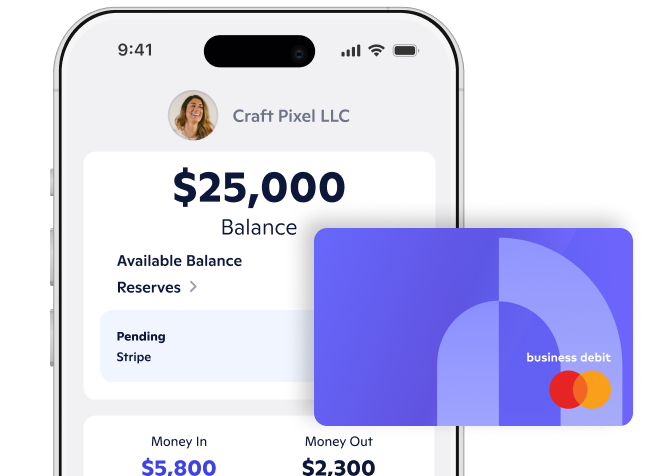
orking capital and steady cash flow are important for the growth of your business. They can also function as a buffer against volatility. If you want to avoid downsizing or debts and have the ability to expand to new markets, financial assistance may help you with access to much-needed resources. There are several small business loans available in Ohio, plus other forms of financial aid such as small business tax credits that can help you keep your small business the way it should be: in business.
If you own and operate your small business in Ohio, you’re probably no stranger to the fact that it can be challenging to secure a business loan or line of credit. Finding lenders in Ohio to grow or sustain your small business in Ohio may feel overwhelming, especially if you’ve never submitted a loan application or are unsure how to navigate lender requirements. The good news, though, is that there are plenty of options, including loans targeted toward underserved communities, minority businesses, and financial aid.
Let’s take a look at the types of loans available and the lenders you can contract for your small business in the state of Ohio – and how to qualify.
Small Business Loan Opportunities in Ohio
Ohio Capital Access Program
The Ohio Development Services Agency (OSDA) runs the Ohio Capital Access Program and offers loan portfolio insurance for Ohio state banks. Think of this type of loan insurance as a loan guarantee where the lender can dip into a pool of funding if the loan defaults.
Why this is relevant for small business owners is that banks are more willing to take a risk on business lending in Ohio. Applicants may be approved for up to $250,000 for working capital expenses and up to $350,000 for fixed asset financing.
Repayment terms differ depending on the type of loan you take out:
- Investing in real estate: up to 15 years
- Purchasing equipment: up to 7 years
- Purchasing equipment: up to 10 years
- Working capital: up to one year but can be renewed
Keep in mind that one of the eligibility requirements is that borrowers will need to put funds towards the lender’s reserve fund. Though it may differ from lender to lender, it usually ends up being around 1.5% to 3% of your loan amount.
Loan Loss Reserve Program
The Loan Loss Reserve Program is also run by the Ohio Development Services Agency and provides funding for small businesses in Ohio that want to be more energy efficient.
Working with the eight Port Authorities throughout the state, the OSDA offers credit enhancement to these organizations when they originate loans to Ohio small businesses.
To qualify, you need to be a business or nonprofit organization in Ohio and prove the project you have planned will conserve a minimum of 15% of prior energy use. Plus, organizations need to be able to pay back the loan within 15 years.
Collateral Enhancement Program
The Collateral Enhancement Program offers loans to help Ohio small businesses to meet the collateral coverage requirements for qualifying loan applications. This program is a great fit for small businesses having trouble qualifying for loans because of a lack of collateral — this cash deposit could help you fill in the gaps.
The loan offers you a cash deposit that acts as collateral for your small business loan for up to five years.
Repayment terms vary depending on the type of loan you secure:
- Real estate: up to 15 years
- Equipment: up to 7 years
- Working capital up to one year
In addition, there are maximum loan amounts — up to $35,000 for working capital expenses and up to $5 million for other purposes.
While most lenders do adhere to these terms, they can set their own repayment terms. To avoid any surprises, it’s best to ask before submitting your application.
Economic and Community Development Institute
The Economic and Community Development Institute, or ECDI, offers small business loans in the Columbus, Cleveland, Akron, Cincinnati, Toledo, and Canton areas.
This type of loan provides funding up to $350,000 and with repayment terms up to five years. To qualify, you’ll also need to attend a required training session. Plus, you’ll need to pay 5% of your loan amount in closing fees and a $25 application fee.
There is also a microloan — the Small Business Solutions Loan — offered through ECDI. Applicants may receive up to $2,500 at a 7% fixed interest rate with a repayment term of 12 months. To qualify for the loan, you’ll need to be a Women’s Business Center — it’s an $80 membership fee to join — be eligible to receive Small Business Administration (SBA) funding, and have a personal credit score of 590 or higher.
Community Advantage Loans
Also offered through EDCI, Community Advantage Loans are designed to help business owners and entrepreneurs who may not qualify for loans from traditional lenders. Think startups, business owners with less than ideal credit scores, minority businesses, and underserved communities.
If you qualify, you can borrow from $750 to $250,000 with lengthier repayment terms, and the loan process can be used for virtually all business reasons. According to EDCI, the SBA guarantee is applicable — 85% of loans are typically approved if you borrow $150,000 or less, and around 75% for loans $150,000 or higher.
Plus, repayment terms differ depending on the purpose of the loan:
- Financing equipment: up to 10 years or up to the useful life of the equipment
- Working capital: Up to 10 years
- Real estate: up to 25 years
Keep in mind that interest rates are prime plus 6%, and you’ll need to either pay 5% of your loan in closing fees, up to a maximum of $2,500.
Business Tax Credits
Compared to other states, Ohio’s small business deduction (SBD) is relatively generous. If you’re looking for some financial relief, you likely will also qualify to take advantage of tax credit opportunities in the Buckeye State. These tax credits can supplement or even take the place of small business loans.
Commonly referred to as Ohio’s Business Income Deduction (form IT BUS), the first $250,000 of your business income filing “Single” or “Married filing jointly” is 100% deductible. For taxpayers filing “Married filing separately,” the first $125,000 of your business income is 100% deductible. Then, any income above these thresholds is taxed at a flat 3% rate. Learn more about Ohio’s small business deduction at the Ohio Department of Taxation.
It’s important to note that to qualify, your business must be a sole proprietorship, LLC, partnership, or S corporation.
The Takeaway
Small business loan options exist to help your business keep running or to tap into its potential for growth. Leveraging the funding available in your state can help you reach your small business goals. Before applying, check the eligibility requirements for the loan you want and have any documentation ready to go to ensure your loan application process is as smooth as possible.

This page is for informational purposes only and is not intended to be relied upon as legal, financial, or accounting advice. Please consult your own professional if you have any questions.






